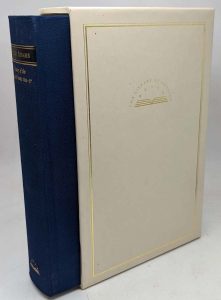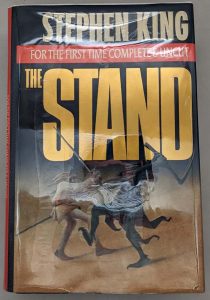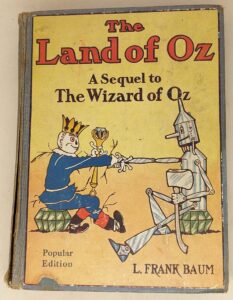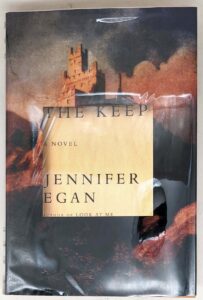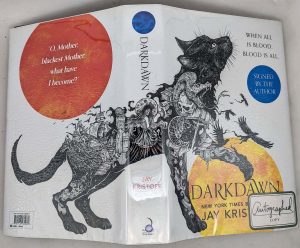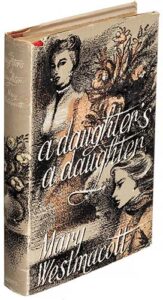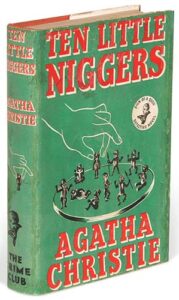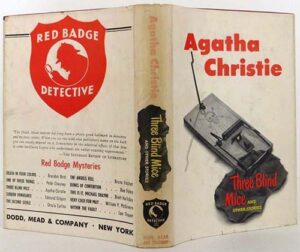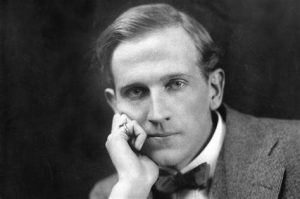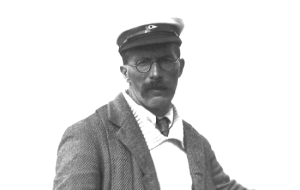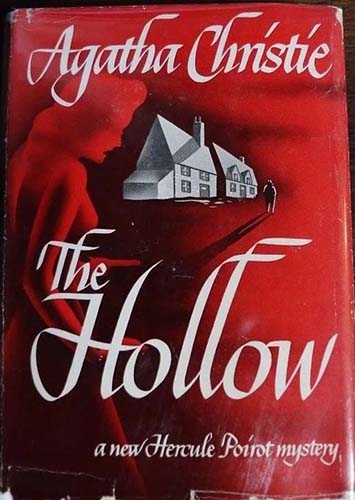
The Hollow is a work of detective fiction by British writer Agatha Christie, first published in the United States by Dodd, Mead & Co. in 1946 and in the United Kingdom by the Collins Crime Club in November of the same year. The US edition retailed at $2.50 and the UK edition at eight shillings and sixpence (8/6). A paperback edition in the US by Dell Books in 1954 changed the title to Murder after Hours.
The novel is an example of a “country house mystery” and was the first of her novels in four years to feature Christie’s Belgian detective Hercule Poirot—one of the longest gaps in the entire series. Christie, who often admitted that she did not like Poirot (a fact parodied by her recurring novelist character Ariadne Oliver), particularly disliked his appearance in this novel. His late arrival, jarring, given the established atmosphere, led Christie to claim in her Autobiography that she ruined the novel by the introduction of Poirot. Agatha Christie’s successful career foresaw the use of her eight owned houses as settings for her novels, which were Taken at the Flood, Dead Man’s Folly, Five Little Pigs, A Pocket Full of Rye, and Crooked House. However, the setting for The Hollow was inspired by Francis L. Sullivan’s house. Francis Loftus Sullivan was an English film and stage actor who portrayed Hercule Poirot in the plays Black Coffee (1930) and Peril at End House (1932) and also played the lead in The Witness for the Prosecution (1953), for which he won a Tony Award in 1955.
Plot Summary
[SPOILER ALERT]
he eccentric Lucy Angkatell has invited the Christows, along with other members of her extended family, to her estate for the weekend. John Christow is carrying on an affair with Henrietta Savernake, a talented sculptor. The beautiful Veronica Cray, an old flame of Christow’s, suddenly appears in the house on Saturday night to borrow a box of matches. She lives at a nearby cottage. Another cottage is occupied by Hercule Poirot, who has been invited for Sunday lunch. John walks Veronica back to her cottage, and returns home at 3 am. The next day, Poirot is witness to a scene that seems strangely staged. Gerda Christow stands with a gun in her hand next to John’s body, as it bleeds into the swimming pool. Lucy, Henrietta, and Edward (a cousin of Lucy’s and a second cousin of Henrietta) are also present at the scene. John utters a final urgent appeal, “Henrietta”, and dies.
It seems obvious that Gerda is the murderer. Henrietta steps forward to take the revolver from her hand, but apparently fumbles and drops it into the swimming pool, destroying the evidence. However, the pistol that Gerda was holding was not the gun used to kill John. None of the witnesses has seen Gerda shoot John. It seems difficult to build a case against any of the other potential suspects. Lucy was the next suspect, as she kept a pistol concealed in her basket of eggs. However, the pistol was the wrong calibre. Henrietta is the next suspect, having left an unusual doodle in the pavilion around the time John was killed. When the murder weapon turns up in Poirot’s hedge, it has fingerprints that match none of the suspects.
The family had deliberately misdirected Poirot, as they each know Gerda is the murderer, and are attempting to save her from imprisonment. Gerda had taken two pistols – shooting John with one, and then planning to be discovered with the other pistol in her hand, later proven not to be the murder weapon. Immediately, Henrietta understood that John’s final appeal was for her to help Gerda. Instinctively, Henrietta assumed the responsibility by dropping the gun into the pool, and later goes back to retrieve the second weapon. She hides it in a clay sculpture of a horse in her workshop to avoid the police searches. Later, she gets it handled by a blind match-seller and then places it in Poirot’s hedge.
Midge Hardcastle, a less affluent relative of the Angkatells, is also staying at the house. She is in love with Edward, but Edward has always been in love with Henrietta, who had refused several of his marriage proposals. Edward comes to the realisation that Henrietta is no longer the Henrietta he once loved. He looks at Midge and realises that she is no longer “little Midge”. Edward asks her to marry him. He goes for a walk with Midge, but coming to a spot where Edward has previously walked with Henrietta, Midge believes that he is still too deeply in love with Henrietta. So, she calls off the wedding.
Edward does not understand that Midge loves him too much to hold him back from Henrietta. Misunderstanding her decision, he attempts suicide by putting his head in a gas oven but he is saved by Midge. With this dramatic proof of his despair at losing her, she relents and the wedding is on again.
With the evidence apparently destroyed or suitably confused, the family believe they have saved Gerda. There is a final clue: the holster in which the murder weapon was kept. Gerda had cut this up and placed it in her workbag. Henrietta rushes to Gerda in an attempt to retrieve it and destroy the final proof of Gerda’s guilt.
Poirot arrives, and rearranges the tea cups before Gerda returns from the kitchen. He suspects the cornered and suspicious Gerda would murder Henrietta. Gerda returns and drinks from the cup intended for Henrietta, and dies. Henrietta seeks closure and visits one of John’s patients. John’s death ended the hope of a cure but she is still showing a resilient spirit. Leaving the hospital, she reflects that there is no happy ending for her. She resolves to embark on a sculpture of herself as “Grief”.
Publication history
- 1946, Dodd Mead and Company (New York), 1946, Hardback, 279 pp
- 1946, Collins Crime Club (London), November
- 1946, Hardback, 256 pp
- 1948, Pocket Books (New York), Paperback (Pocket number 485)
- 1950, Pan Books, Paperback, 239 pp (Pan number 119)
- 1957, Fontana Books (Imprint of HarperCollins), Paperback, 189 pp
The US serialisation of this story was a four-part shortened version in Collier’s Weekly between 4 May (Volume 117, Number 18) and 25 May 1946 (Volume 117, Number 21) under the title of The Outraged Heart with illustrations by Mario Cooper.
The Hollow – First Edition Book Identification Guide
The books are listed in the order of publication. While the majority of Agatha Christie’s books were first published in the UK. There are many titles that were first published in the US. The title of the book may differs from the UK edition in some cases.
| Year | Title | Publisher | First edition/printing identification points |
|---|---|---|---|
| 1946 | The Hollow | Dodd, Mead & Co, NY, 1946 | First edition. Date on the title & copyright page matches. No statement of later printings. Yellow cloth lettered in black. Price 8/6. |
| 1946 | The Hollow | William Collins & Sons, London, [1946] | First English edition. "1945" on single line stated on the copyright page. No statement of later printings. Red or orange cloth lettered in black. Price $2.50. |
Note about Book Club Editions (BCE) and reprints:
UK: You can see statements of later reprint dates or of book club on the copyright page.
US: The US reprint publishers usually use the same sheets as the first edition and are harder to identify by looking at the title page or the copyright page. One may identify a BCE by looking at the DJ, which doesn’t have a price on top of the front flap and a “Book Club Edition” imprint at the bottom. If the dust jacked is clipped at both the top/bottom of the front flap. You can safely assume it’s a BCE . If the book is missing the dust jacket. Later BCE editions can be identified by its plain boards, while first printings are issued in quarter cloth.
Please refer to the gallery for detailed images of true first edition bindings and dust jackets.
The Hollow – First Edition Dust Jacket Identification Guide
First edition bindings and various dust jacket printings identification.
